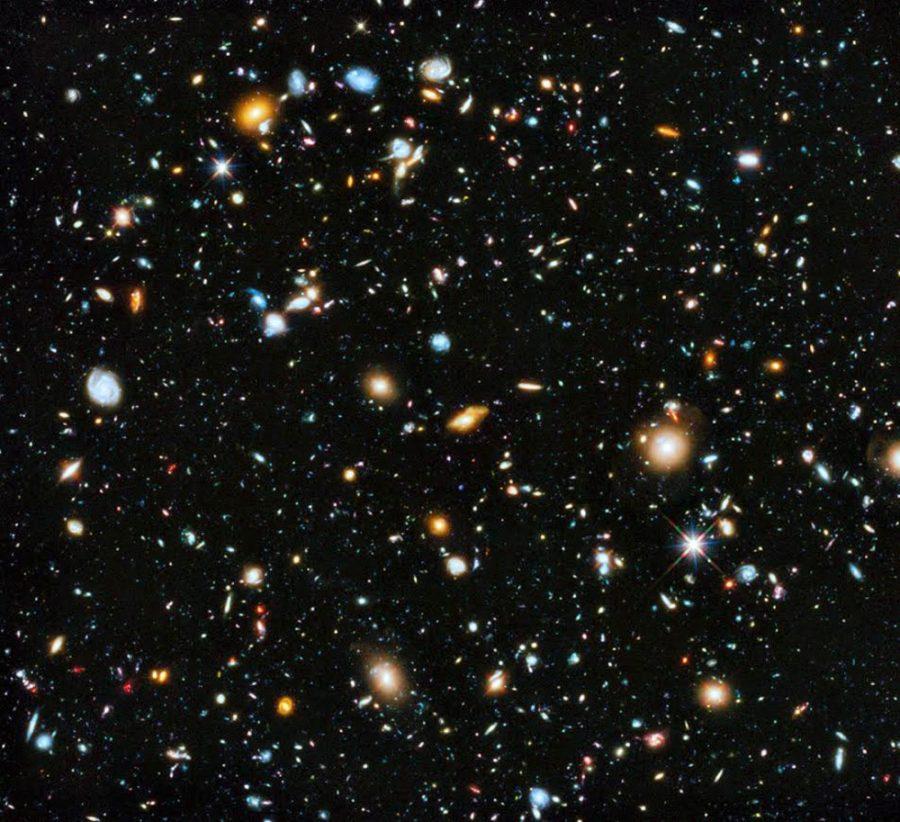The Hubble Space Telescope celebrates its 25th birthday tomorrow.
The Hubble Space Telescope enables astronomers to see clearer and farther, ultimately revealing images of deep space, allowing scientists to discover more than ever before. A team of about 10 members from the UA and 20 from other institutions played a direct role in the development of infrared instrumentation that led to these bigger questions and better answers, according to Don McCarthy, a member of the science team on Near Infrared Camera and Multi-Object Spectrometer and a UA astronomer.
Hubble is most well-known for an image called the Hubble Deep Field, taken with a very long exposure time in order to see extremely faint objects in a small patch of the sky. This image allowed astronomers to look back into the early universe, and “completely changed the way people do extragalactic science,” McCarthy said.
The UA team used the time NASA granted it with Hubble to look at the same patch of sky now using the infrared instrument they developed. They could see even further back into the early universe than ever before.
The public directly benefits from this research in many ways.
According to McCarthy, the benefits are very practical. For example, the medical field has adopted the use of infrared microscopes on the skin to detect the beginning stages of tumors. The semiconductor industry also uses infrared microscopes to look within computer chips and locate inefficiencies in the circuitry.
This technology stemmed from the UA team’s development of “infrared eyes” for Hubble called the Near Infrared Camera and Multi-Object Spectrometer. Infrared refers to the wavelengths of light longer than those visible to the human eye. Having detectors for these wavelengths allows scientists to translate the infrared light received into something we can display in colorized images.
According to Rodger Thompson, an astronomy professor and principal investigator for NICMOS, there are two main reasons for having an infrared instrument.
The first reason is that more distant objects are no longer visible at the wavelengths of light seen by the human eye. This is because according to our current model of the universe, space-time is expanding at an increasing rate. An object will give off light at a certain wavelength, but as that light travels through space, it gets stretched due to this expansion. Light from very distant objects, like the ones that Hubble has the strength to uncover, is so stretched that it is shifted out of the visible wavelengths of light and into longer infrared wavelengths, which Hubble can now detect.
Another reason for having an infrared instrument, according to Thompson, is that infrared light penetrates dusty regions of space better than visible light.
“The birthplaces of stars are generally shrouded in dust,” Thompson said. “[Now] we can see through that and see stars being formed.”
Thompson also said NICMOS’s detectors allowed “more sensitivity and much higher spatial resolution. Not only were the pictures brighter but also sharper than from the ground.”
NICMOS is about the size of a refrigerator and weighs about 700 pounds, Thompson said.
The light sensor is made up of a ½-inch-by-½-inch square collecting and quantifying the light received. These are then subdivided into 256-by-256 infrared detector pixels. Each pixel is equipped with filters for specific wavelengths of light, McCarthy said.
There are other public benefits that come from research with the Hubble telescope that are less tangible but equally significant.
“How can you put a price on something that’s influenced all of humanity?” McCarthy asked, though also saying that you can’t launch a science program with the sole intention of inspiring others. “And that is something Hubble Space telescope has done. … There’s hardly a person who hasn’t seen or been impacted by a pretty picture from Hubble.”
McCarthy said that for him, that’s the biggest benefit: “The inspiration of a new generation of people.”
_______________
Follow Mikayla Mace on Twitter.









